Top Considerations for Electric Roof Lantern Blinds
BOOK A FREE APPOINTMENT
Roof Lanterns have become a trend for home extensions across the UK to ensure natural light floods your living space. However natural light needs to be managed to ensure you have comfort in this living space all year round. Our roof lantern blinds protect you from excessive heat gain, winter drafts, excessive brightness and TV glare, furnishings fading as well as flies occupying the lantern in the summer.
Our customers have lanterns of different sizes but they all have the same expectations from their new WindowTreat roof lantern blind. The fabric has to perform and look great whilst defying gravity at any size. The roof blind system must have no visible cords across the structural opening and be built for longevity. With the protection of our 5 Year peace of mind warranty, our portfolio of roof blind systems ticks all these boxes.
1.Choosing a roof lantern blind.
Our roof blind system portfolio has been engineered to ensure the fabric looks great at any size without visible cords on show. However, a key component of our roof blind systems is the roller fabric itself. This is perhaps the key element of your investment to ensure your roof blind performs and serves its purpose. Each system has its portfolio of fabrics which are designed to be able to withstand considerable tension without stretching or deforming over time. This allows the fabrics to have constant tension applied to them to defy gravity. The larger the roof lantern the more tension is required to achieve the desired fabric finish suitable for your home. In our homes, lanterns are typically not far above our heads when standing up so it is nowhere for the fabric to hide from our view. Specifying the engineering (tension) required will directly result in the finish of the fabric and disappointment. Our systems start at 8kg of applied fabric tension for smaller lanterns but quickly work their way up to 100kg of tension for very large systems.
The roller fabric you chose will depend on what purpose you have for your roof blind. If you require high summer heat rejection then we need to ensure the fabric has a high Solar Reflectance Rv%. The fabric needs to be able to reflect the heat out through your lantern's modern glazing to the outside. If it merely absorbs all the heat then you would have created an overhead radiator and your living space will not feel the benefit. For TV glare some fabrics will not resolve the issue. The light transmittance Tv% needs to be around 5% or lower to protect our screens. Some fabrics will backlight into a screen of haze which will show on your television screen.
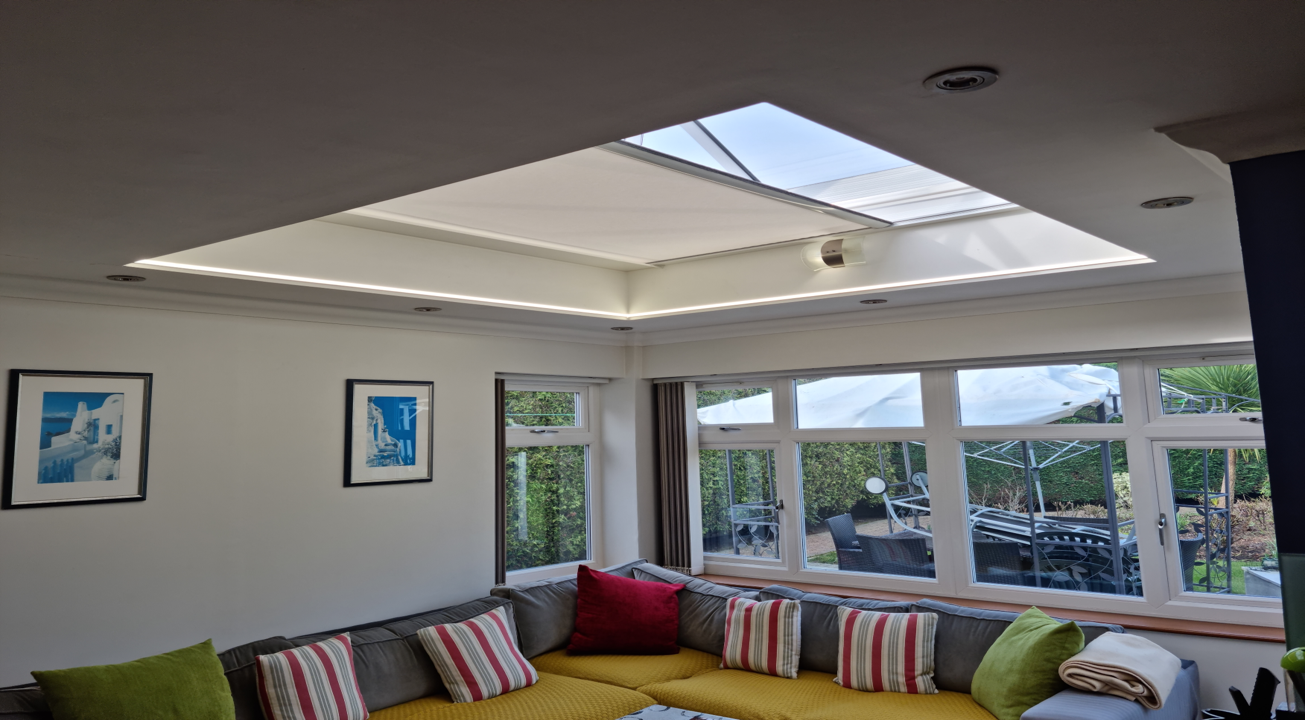
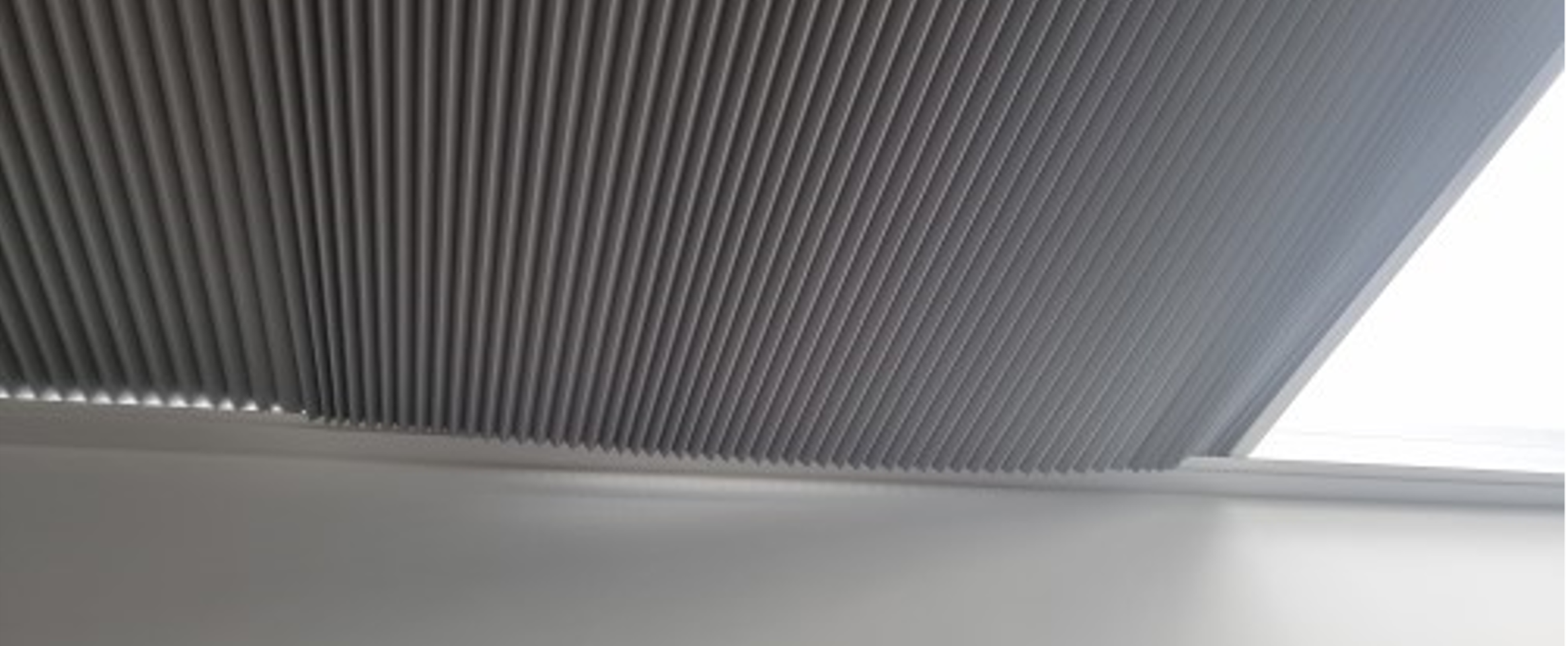
2.Pleated (Paperweight) Fabrics V’s Roller Fabrics
Our customers are looking for a more sophisticated approach than the pleated, honeycomb-type fabrics. The paperweight fabric cannot have tension applied to it so to remain horizontal it requires the ‘washing line’ effect of nylon cords to hold it up. Manufacturers consistently remove these cords to satisfy the home-users demand but the reality is that as soon as the sun hits them the fabric will begin to sag. The pleated roof blind systems can only be considered for small roof lanterns because of this.
The fabric concertinas at one end cause an unprotected dust shelf. This dust and dead flies work themselves into the fabric over time diminishing its performance and general appearance. All the systems in our Roller roof blind portfolio have powder-coated aluminium headboxes that protect the roller fabric when not in use.
The components of the pleated systems are plastic. This is an issue in roof lanterns which get considerable natural light as the components soon get brittle and break. For this reason, the manufacturers of these components only give these parts a 1-year warranty. Our roller roof blind portfolio is all backed by a 5-year peace of mind warranty so only components with a 5-year or more manufacturer's warranty can be used in them. A roof blind system is only as good as its weakest link.
Pleated fabrics may sit in side rails but when bi-fold or sliding doors are opened they can be blown from these rails causing a failure as the motor continues to operate. Our roller fabric systems have a zip welded to each side to lock the fabric into the side channels and avoid such failures. Our customers are looking to invest once in quality systems with longevity in mind.
3.Zipped Ribbon Technology on our Roller Fabrics
The welded zip ribbon technology is a safety feature on our portfolio of roof blind systems. It ensures the fabric is locked into the side channels to ensure it cannot be blown out when another glazing is opened up in that area. However, it also serves as a guiding mechanism to ensure the fabric rolls onto its tube squarely without telescoping off on the sides over time. This technology guarantees that the fabric retracts onto the motor tube in the same manner in year 10 as it was the day it was installed.
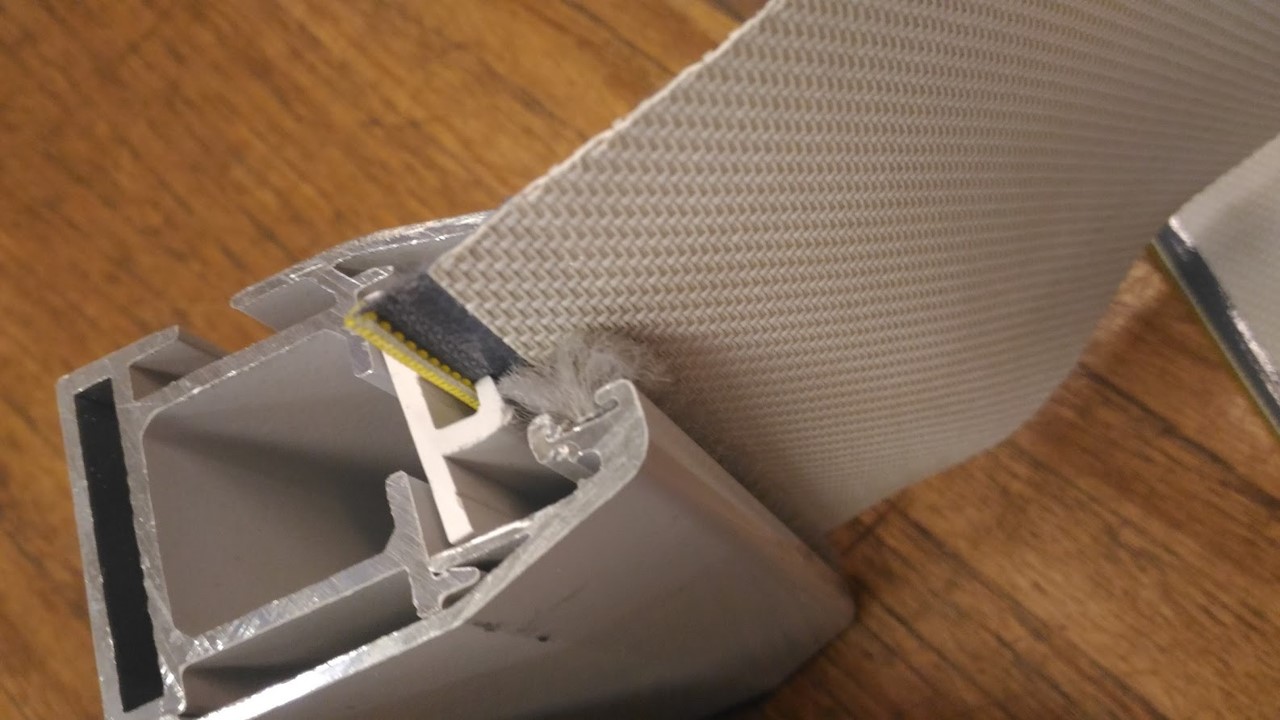
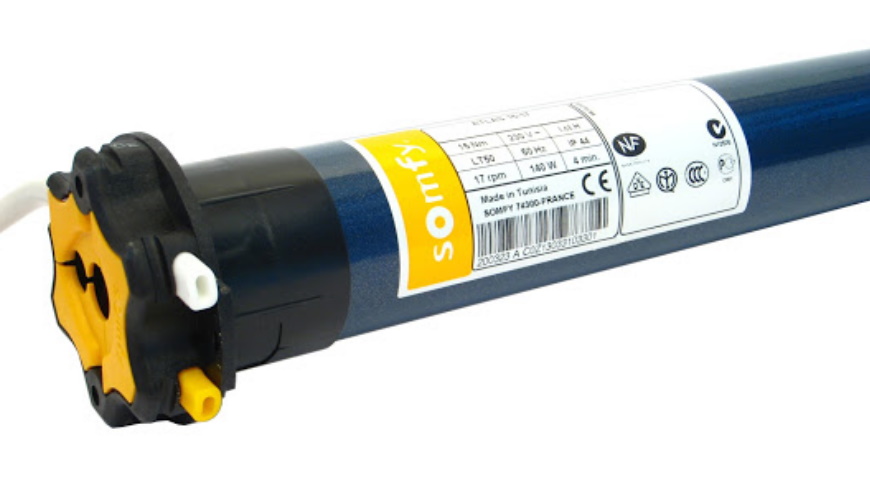
4.The Motors
Firstly you will not see the motor. It is inside the tube that the fabric rolls around and it’s all contained in the powder-coated aluminium headbox at one end of your lantern. Our roof blind systems use various Somfy radio transmitted signal RTS motors. This means you can control your roof blind with a remote control handset or a remote wall switch. You simply have to press a button without pointing it at the blind as the signal is omnidirectional.
All our roof blind portfolio is compatible with home automation systems such as Control 4 or HIVE. Alternatively, they come with their home automation system – TaHoma. This will allow your roof blind to operate on timers, sensors and voice activation through 3rd party devices such as ‘Alexa’.
At smaller sizes, you can opt for a battery solar-powered system. The solar panel is extremely sensitive and will work to top up the batteries even in the winter as it only needs some visible light to function effectively. However, mains power is required for bigger lanterns and is often more cost-effective on smaller systems too. They involve a 5A switched fuse spur being installed by your electrician. Usually an easy and undisruptive job and very affordable.
5. Installation of our roof blind systems
Our pricing includes the manufacturing survey and installation. These ‘niche’ advanced systems must be installed by our experienced teams. This will give you peace of mind as the 5-year warranty including workmanship will be activated.
DIY systems on the market rely on there is no comeback from the suppliers. The tolerances on the measuring are very small and have to be done correctly and with experience to ensure the installation is uncompromised. The systems themselves are advanced and it’s hard to find local blind companies that install them let alone try to do this yourself or through your builder.
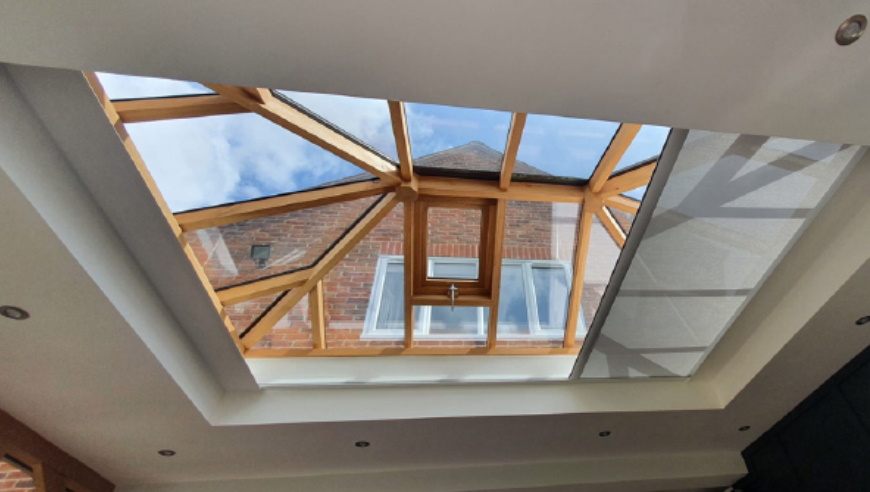
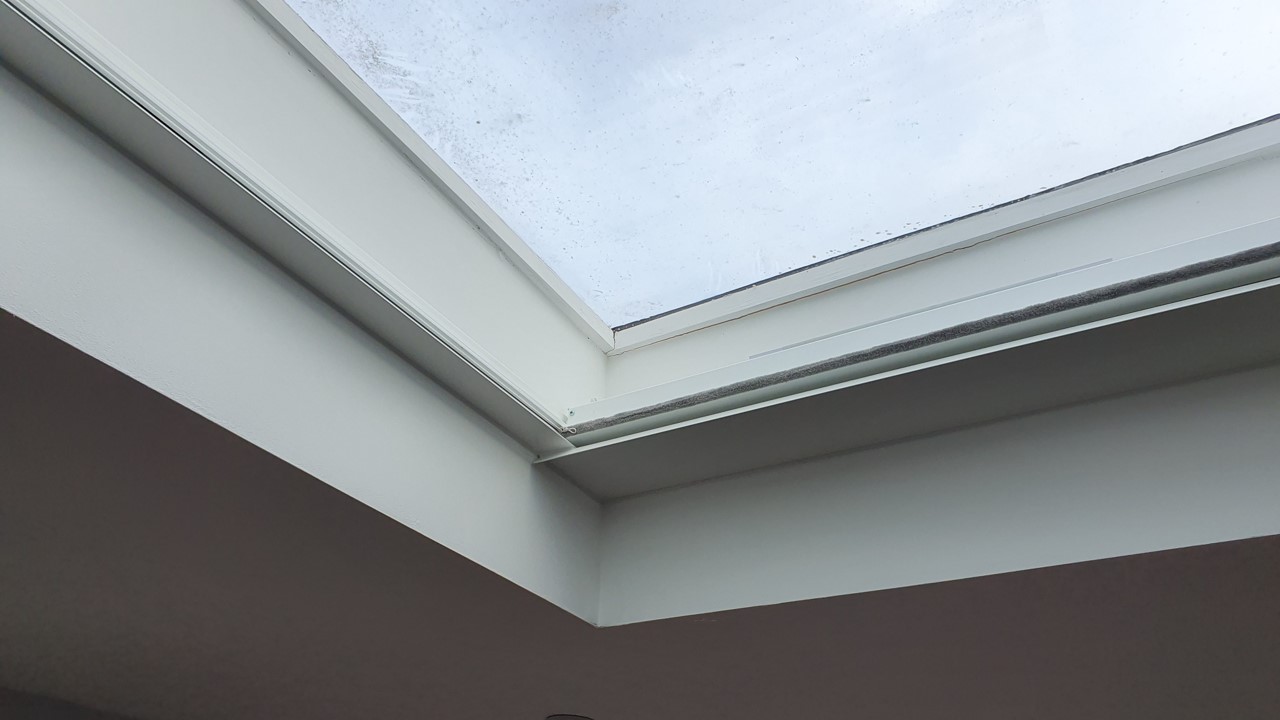
6.The positioning of an electric roof blind
The positioning of your electric roof blind will be a minimum of 200mm from the top of the upstand on a lantern and 300mm on flat roof glazing. The main reason is to protect the warranty of the system by allowing all the working parts including the fabric to breathe in the excessive temperatures that can build up.
It also allows the powder-coated aluminium hardware to blend into the upstand whilst the roof lantern or flat glass remains the ‘star of the show. The headboxes containing the motor and fabric are lower down ensuring that when entering the room the glazing is the feature and all corners are visible.
You may have the lantern blind installed lower in the upstand than the minimal requirements. This is especially true if you want to reduce the airflow into the upstand to create a cosier room in the winter.
7.Concealment of lantern roof blinds
Concealment of lantern roof blinds can be planned for the 1st fix of your extension build. The roof blind will become bigger than your structural opening as the hardware will be designed to sit behind the upstand out of view. It will allow the fabric’s leading fabric hem bar to appear from one end and disappear from the other end for the ultimate in minimalism. However, this bigger size means you may need a larger roof blind system to ensure the fabric finish is uncompromised at the larger size. The space required to conceal a roof blind will depend on the roof blind system itself and all technical drawings are obtainable on our website or through our sales team.
Your architect can create the space required for the roof blind system and design their removable cover leaving just the gap for the fabric to draw across. Or you can invest in the patented Blindspace boxes with their removable hinged covers at the appropriate sizes. Whichever approach you decide to take it is imperative that any covers are removable so the blind can be accessed in the future for servicing or repair without damage to your build.
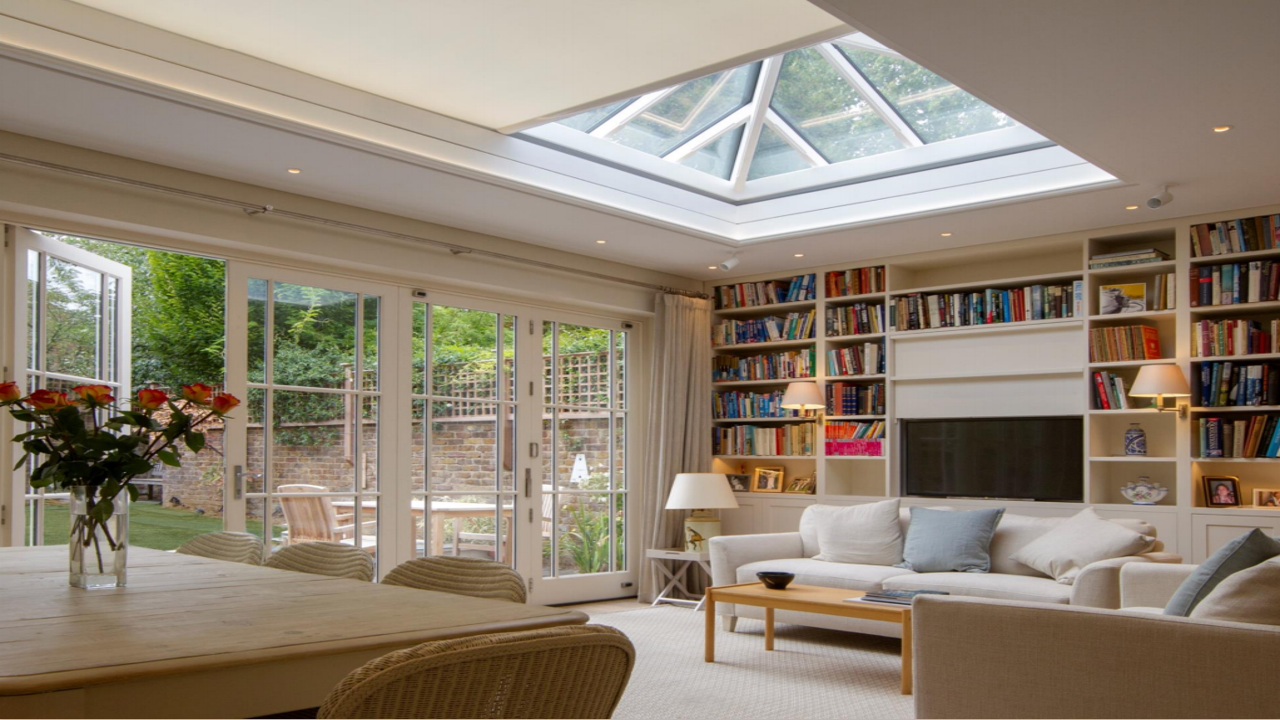
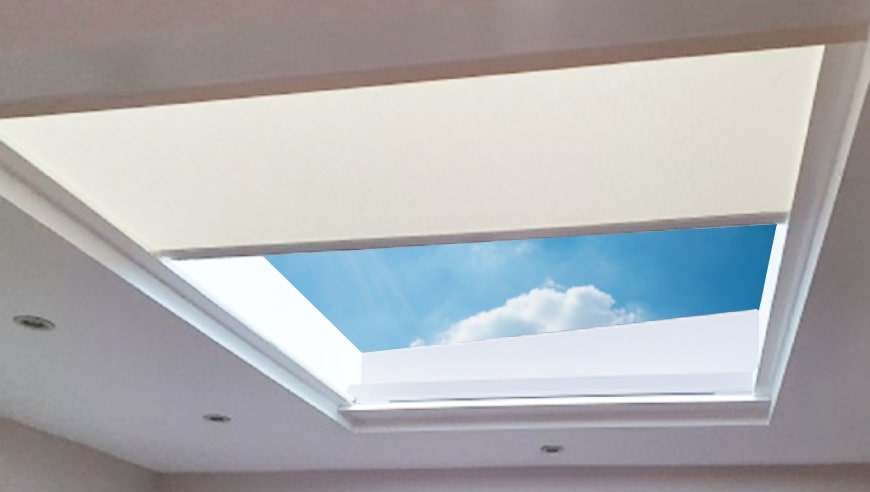
8. The price is an investment
There are a lot of elements to fabricating a roof blind system. The motors, the fabric, the zip ribbon technology, the tension springs as well as the labour involved in putting these together to exact measurements. Any roof lantern blind can be value engineered to get the price down but at a cost. This cost is the finish on the fabric not being adequate for your home, its overall performance not managing the purpose or the longevity of the system. When defying gravity with roof blind systems we’ve learnt that the cost of value engineering equals unhappy customers.
Our roller roof blind portfolio without any visible cords was born.
Every component of the roof blind system is of the highest quality and built to perform with durability. A roof lantern blind is only as good as the weakest component.
Together with fabrication costs, there is the cost of survey and installation covering large areas of the country. The average time to install a roof blind is 3-5 hours which means that coupled with travel the team typically will only do your job that day.
Roof lantern blinds are often more expensive than the lantern itself.
